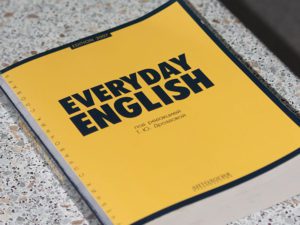How can we teach our students to succeed in the 21st century?
This is the driving question in education today. Now that information is readily available at the click of a button, coupled with the ever-changing technology-driven world we live in, school has shifted its focus.
The Partnership for 21st Century Skills, a national organization founded in 2001, has identified four core skills–Critical Thinking, Communication, Collaboration, and Creativity–nicknamed the Four C’s. California is one of 19 states working with P21, and California educators are honing in on the Four C’s.
My personal favorite is creativity. How do we help students tap into their imagination?
Creative writing is an obvious arena for imagination, and many students enjoy the freedom to write whatever they want. Open-ended prompts such as ‘What would you do if a talking dog arrived at your front door?’ are often used as daily warm-ups in classrooms.
Story-telling, a classic genre within creative writing, takes more time. And time, as all teachers know, is a limited resource in school. Narrative writing is only one text type that teachers must cover, so, unfortunately, for most of the year students are not learning creative writing.
Writing a story requires a great deal of creativity.
This begins with brainstorming ideas. It can be difficult to think of a plot, so we usually start with the setting:
- Where will your story take place?
- Is it a real place or imaginary?
- What is the weather like?
- What time of day is it?
- What can you see, hear, smell, taste, and feel in this place?
Then, we explore the characters:
- Who is the main character in your story?
- Is it a person, animal, object, or a made-up creature?
- What does he/she/it look like?
- What character traits does he/she/it possess?
- Who else will be in the story?
- What do they look like?
- What are their character traits?
- Will they help or hurt the main character?
At this point, students can imagine their characters in a particular place, and this provides a context for their plot:
- What problems could your characters face?
- Can you think of a tricky problem that would require a clever solution?
- How would your characters begin to solve this problem?
- What would happen next?
- How would the problem be resolved?
Their answers to these questions provide what I like to call a story sketch. This serves as a guide for their first draft. They must fill in their sketch with descriptive writing, figurative language, and dialogue.
The next stage in the process is to workshop their writing. Students read each other’s work and learn from each other. This is a chance for students to practice giving and receiving feedback:
- Does the story make sense?
- Are there any plot holes?
- Is the writing descriptive enough so that the reader can imagine being in the story?
- What did the writer do really well?
- What suggestions can you offer the writer?
Next, mechanical errors regarding grammar, punctuation, and capitalization are resolved.
And voila, the student has written a story!
I began by describing creative writing as a medium for nurturing creativity, but as you can see, it also requires communication, collaboration, and critical thinking. Creative writing is, in fact, a fun way for students to cultivate all of the Four C’s.















